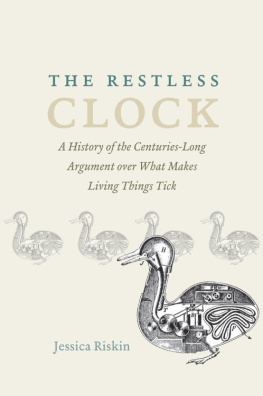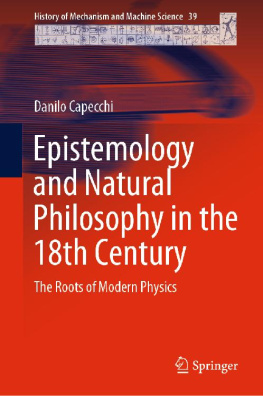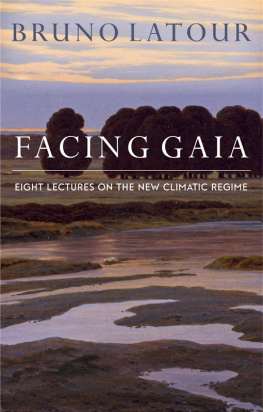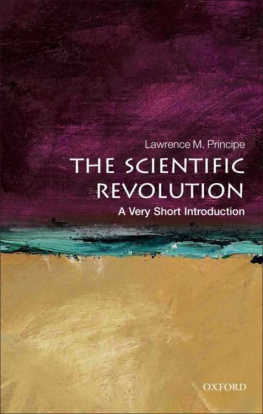The Restless Clock
A History of the Centuries-Long Argument over What Makes Living Things Tick
Jessica Riskin
The University of Chicago Press
CHICAGO & LONDON
Jessica Riskin is professor of history at Stanford University and author of Science in the Age of Sensibility: The Sentimental Empiricists of the French Enlightenment, also published by the University of Chicago Press.
The University of Chicago Press, Chicago 60637
The University of Chicago Press, Ltd., London
2016 by Jessica Riskin
All rights reserved. Published 2016.
Printed in the United States of America
25 24 23 22 21 20 19 18 17 16 1 2 3 4 5
ISBN-13: 978-0-226-30292-8 (cloth)
ISBN-13: 978-0-226-30308-6 (e-book)
DOI: 10.7208/chicago/9780226303086.001.0001
Library of Congress Cataloging-in-Publication Data
Riskin, Jessica, author.
The restless clock : a history of the centuries-long argument over what makes living things tick / Jessica Riskin.
pages ; cm
Includes bibliographical references and index.
ISBN 978-0-226-30292-8 (cloth : alk. paper) ISBN 978-0-226-30308-6 (ebook) 1. Vitalism. 2. Mechanism (Philosophy) 3. Life (Biology) 4. SciencePhilosophy. I. Title.
Q175.32.V65R57 2016
147dc23
2015019941
Published with the support of the Susan E. Abrams Fund
This paper meets the requirements of ANSI/NISO Z39.48-1992 (Permanence of Paper).
For Madeleine and for Oliver, my vis viva, my pouvoir de la vie
In German, the name for the balance of a clock is Unruhethat is to say disquiet. One could say that it is the same thing in our body, which can never be perfectly at ease: because if it were, a new impression of objects, a little change in the organs, in the vessels and viscera, would change the balance and make these parts exert some small effort to get back to the best state possible; which produces a perpetual conflict that is, so to speak, the disquiet of our Clock, so that this appellation is rather to my liking.
G. W. Leibniz, Nouveaux essais (1704)
Now, to make the comparison of a watch better suited to a living body and less imperfect, one must compare the exciting cause of organic movements with the spring of the watch; and consider the supple containing parts as well as the essential fluids contained by them as the works of the movement of the instrument in question. Then one can see, first of all, that the spring (the exciting cause) is the essential motor, without which, in fact, everything would remain inactive, and that its variations in tension must cause variations in the energy and rapidity of the movements.
J.-B. Lamarck, Philosophie zoologique (1809)
Let us analyse the motion of a real clock accurately. It is not at all a purely mechanical phenomenon. A purely mechanical clock would need no spring, no winding. Once set in motion, it would go on forever. A real clock without a spring stops after a few beats of the pendulum, its mechanical energy is turned into heat. This is an infinitely complicated atomistic process. The general picture the physicist forms of it compels him to admit that the inverse process is not entirely impossible: a springless clock might suddenly begin to move, at the expense of the heat energy of its own cog wheels and of the environment. The physicist would have to say: The clock experiences an exceptionally intense fit of Brownian movement.
E. Schrdinger, What Is Life? (1944)
Contents
Figures
Pilgrim souvenir of the Rood of Grace, fourteenth century |
Automaton Magi on the Piazza San Marco clock |
Strasbourg astronomical clock, engraving by Isaac Brunn |
Etching of the Stanza dei Venti, Villa Aldobrandini, by Giovanni Battista Falda |
Isaac De Caus, Grotto of Neptune |
Isaac De Caus, menacing owl and frightened birds |
Isaac De Caus, Grotto of Galatea |
Athanasius Kirchers rendition of a camshaft |
Portrait of Ren Descartes by Franz Hals |
Illustration of the mechanism of sensation from Descartess Trait de lhomme |
Christiaan Huygenss drawing of a spring balance for a watch, 1675 |
Rendition of the eye as camera obscura, from Johann Zahn, Oculus artificialis |
Christopher Wrens depiction of a brain from Thomas Williss Cerebri Anatome, and Antoni van Leeuwenhoeks drawing of a dogs uterus |
The nerves of the trunk, from Thomas Williss Two Discourses concerning the Souls of Brutes, and the organ at Kings College, University of Cambridge |
Portrait of Gottfried Wilhelm Leibniz, after a painting by Bernhard Francke |
The nervous system of a silkworm, from Jan Swammerdam, Book of Nature |
Faune jouant de la flte, statue by Antoine Coysevox |
The Flutist, the Piper, and the Duck, from Vaucansons Mcanisme du fluteur automate |
Wolfgang von Kempelens Chess-Playing Turk, from Windisch, Lettres sur le joueur dechecs de M. de Kempelen |
The Jaquet-Droz Musicienne |
The Jaquet-Droz Dessinateur |
A much-reproduced rendition of Vaucansons Duck and one of a mysterious set of photographs, labeled Pictures of Vaucansons Duck received from Dresden |
Maillards artificial swan |
Athanasius Kirchers design for a speaking figure, from Oedipus Aegyptiacus |
The abb Micals pair of discoursing heads |
Joseph Fabers talking head advertised as Barnums Euphonia |
Adolf Von Menzel, Die Tafelrunde, a dinner hosted by Frederick II at Sanssouci Palace |
Lamarcks chart of species-transformation from Philosophie zoologique |
Portrait of Jean-Baptiste Lamarck, lithograph by Louis-Lopold Boilly |
Giovanni Aldinis electrical antics with corpses, from Essai thorique, and Andrew Ure galvanizing the corpse of an executed murderer, from Figuier, Merveilles de la science |
Page from Darwins secret transmutation notebook of 1837, Notebook B. |
The results of pigeon-fancying, from Darwin, Variation of Animals and Plants |
An earlobe mutilation from August Weismanns Supposed Transmission of Mutations |
Sylvia Field as Helena and Albert Van Dekker as Radius, a robot, in a scene from the stage production of R.U.R. and a robot uprising from the stage production of R.U.R. |
Early robot cartoon from Life (1923) and Westinghouses Mr. Televox in the New York Times (1927) |
Westinghouses Mr Televox |
Eric the Robot, from the Illustrated London News |
Ross Ashbys Homeostat, from The Electronic Brain, Radio-Electronics |
One of Grey Walters electromechanical tortoises, Elmer and Elsie |
Norbert Wiener with his tropism machine, the Moth/Bedbug |
Claude Shannon with his mouse, Theseus |
Plates
Sketch of an automaton she-devil by Giovanni Fontana |
Automaton devil from the collection of Ludovico Settala |






